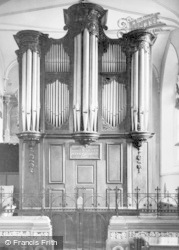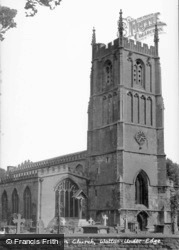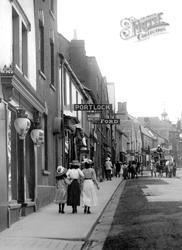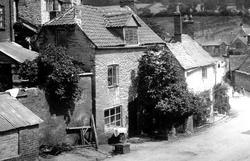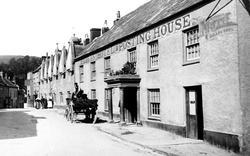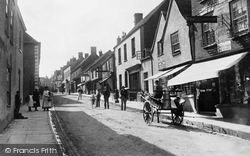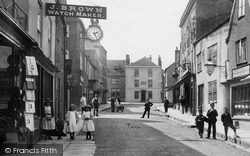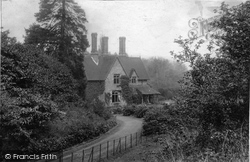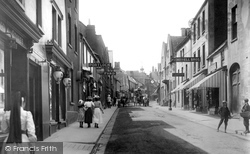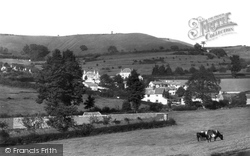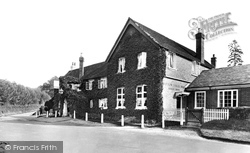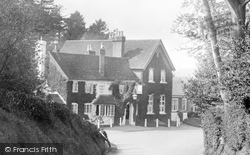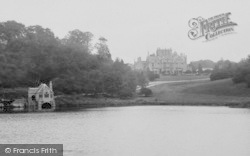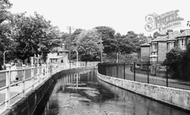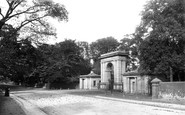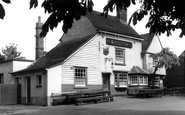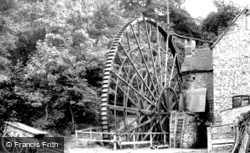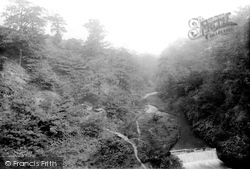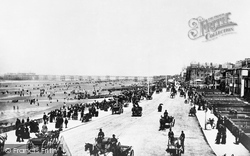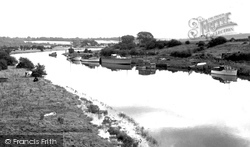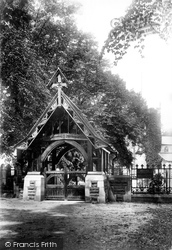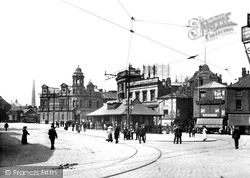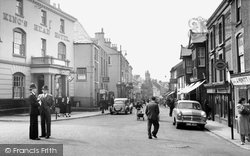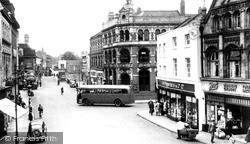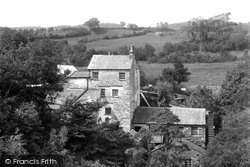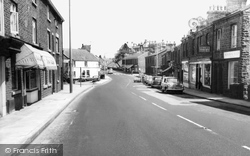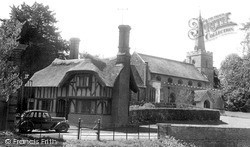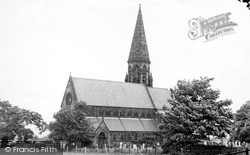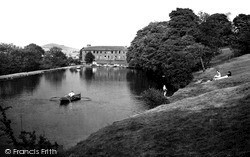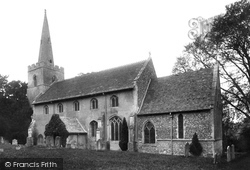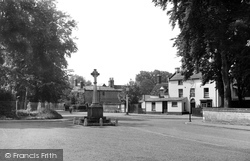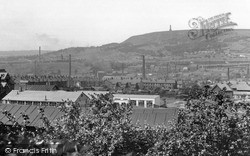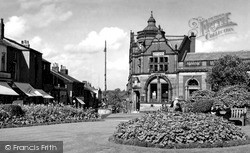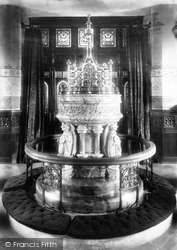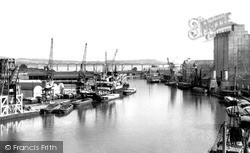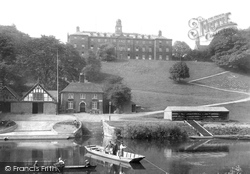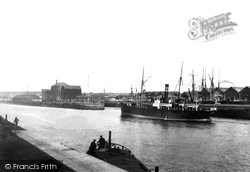Places
5 places found.
Those places high-lighted have photos. All locations may have maps, books and memories.
Photos
104 photos found. Showing results 41 to 60.
Maps
75 maps found.
Books
Sorry, no books were found that related to your search.
Memories
177 memories found. Showing results 21 to 30.
Robert William Shaw Family My Greatgrandfather
My GreatGrandParents Were Robert William Shaw and Eleanor (Wilkinson) Shaw. He worked as a Roller Coverer at a Cotton Factory, I do not know what the name of the factory was. I know my Grandmothers name ...Read more
A memory of Sabden in 1880 by
Bathing In The River
Montague terrace was home to many children. I remember the Allen's, John, June, Barry, Hazel, Ivan & Valerie. The White's, Maurice and Barbara, The William,s and Smith,s, Joan, Roy, Margaret, Jeffrey, and at least three ...Read more
A memory of Bishopstoke in 1949 by
Re Comment By John Howard Norfolk On Wigan Clogs
Wigan-made clogs always did have a reputation even way back when - so it's nice to have this confirmation of their quality holding up even to today. I've even discovered that one of my ancestors made his ...Read more
A memory of Wigan by
.All My Yesterdays.
The footpath running down the side of The Bull took you to Herd Lane School and beyond. On the left of the footpath is a disused quarry, which was a popular fishing venue called Woodies Pond. Audawn Coaches were based at the entrance to Woodies. ...Read more
A memory of Corringham by
Rodgett Bashall
I'm only a soft southener, but my several times great-grandparents were from 'up north' in cotton, my great-grandmother married a vicar in Dorchester, in the 1890s, had 8 kids. Can anybody tell me anything about the Rodgetts or Bashalls? Thanks
A memory of Walton-le-Dale in 1870 by
From The Beginning!
I was born in 1938 in Needwood Street off Rochdale Road. My Mam and Dad were allocated a new flat in Kingsley Crescent when I was a year old so all my memories are of the 'flats'. I, along with my two sisters and one brother, ...Read more
A memory of Collyhurst in 1940 by
Wartime Evacuee 1939 1940
In August 1939 I was evacuated frm Salford to Caton. I had my gas mask, a small parcel of food and a label on my clothing. We arrived at the then beautiful station, adorned with flowers. Then we walked to the Village ...Read more
A memory of Caton in 1930 by
Thomas Binns 1845 1921 No 1 The Green Later No 3 Grange Cottages
Hello - I would be very grateful for any information - especially photos - of my ancestor Thomas Binns who moved from Cowling to Micklethwaite c. 1898. He had built Carr ...Read more
A memory of Micklethwaite in 1900 by
Crichel House During The War Years
Dumpton House (Preparatory) School was evacuated to Crichel during the Second World War from Broadstairs in Kent. My older brother (Paul Cremer) was already at the school and due to the war my parents sent me ...Read more
A memory of Crichel Ho in 1940 by
The Original Grove Hotel In Stapenhill
When I was about 4 years old in 1948 my Auntie Jess and Uncle Albert (Haynes) ran the Grove Hotel at Stapenhill. It was the original one, not the one which is there now. It was a really lovely old building ...Read more
A memory of Stapenhill in 1948 by
Captions
124 captions found. Showing results 49 to 72.
Water power played an important role in the development of the factory system, for it was harnessed to drive machinery in cotton and woollen mills alike.
This early cotton mill in the valley of the River Wye was the scene, if the propaganda is to be believed, of some of the worst horrors of the exploitation of child labour in the 19th century.
Later the race served a bone mill and a small woollen and cotton mill nearby. To one sender of this postcard, it was `not a bad view for this area`.
Nearby Hampton Court became the home of the Arkwright family, the well-known cotton spinning industrialists. The family were great benefactors to the village, hence the name of these almshouses.
By the 1870s, many Lancashire cotton workers received three day's unpaid holiday a year, which was tacked onto a weekend to give a five-day break.
Alkali was needed not only for the production of soap but also to finish textiles in the nearby Lancashire cotton mills.
The most famous person resting here must be John Horrocks, who founded his great cotton empire at Preston. You can see the iron railings around his grave at the bottom left of our picture.
Rochdale abandoned its tramway system in November 1932; it was a casualty of the Depression, along with many of the town's cotton mills.
The cotton mill and the later factories were in full production from the 18th century, but now they form part of a heritage park for tourists.
Once famous for the manufacture of ribbons, Nuneaton's industrial base diversified to include ironworks, worsted factories, cotton and silk goods.
Bobbin manufacture for the wool and cotton mills of the north of England was once an important industry in the well-wooded Lake District.
Bobbin manufacture for the wool and cotton mills of the north of England was once an important industry in the well-wooded Lake District.
Most of the mills built here were for cotton spinning and weaving; so many were established in the locality that just across the border in Derbyshire there is even a town called New Mills.
When the Cotton family commissioned Capability Brown to design a park in 1756, he cut a swathe through the village, separating the church and a couple of farms and cottages from the rest of the village
In 1862 George Charnley Dewhurst, a wealthy Manchester cotton magnate, bought the Oughtrington estates and became a benefactor to the village.
The lake, originally the reservoir for the cotton mill at the far end, was used for boating and swimming, whilst sunbathers and picnickers enjoyed its wooded banks.
Inside there are monuments to the Hynde-Cotton family.
A visitor from 1955 would be rather confused by this view (taken from the gateway of Cotton End House), as the war memorial was moved in 2001 from the centre to the right-hand side of the road and
Ramsbottom is a small cotton town on the Irwell less than four miles north of Bury, and just over eleven miles from Manchester.
It was famous for the production of button moulding, although, as in so many towns in the area, cotton was also produced here.
The 19th-century cotton industry brought great wealth to Clayton, some of which went to build the church.
As well as timber, Sharpness handled all manner of grains, linseed, palm kernels, cotton seed, offal grains and ground nuts.
on a magnificent site overlooking the entire town of Shrewsbury; the school building was originally built in the 18th century to house orphans, who were then trained to work in the cotton
With the mills of Oldham and Bolton preferring to use Egyptian rather than American cotton, the MSC saw its share of total UK imports for Egyptian cotton rise from 21.4 per cent to 33.6 per cent
Places (5)
Photos (104)
Memories (177)
Books (0)
Maps (75)




